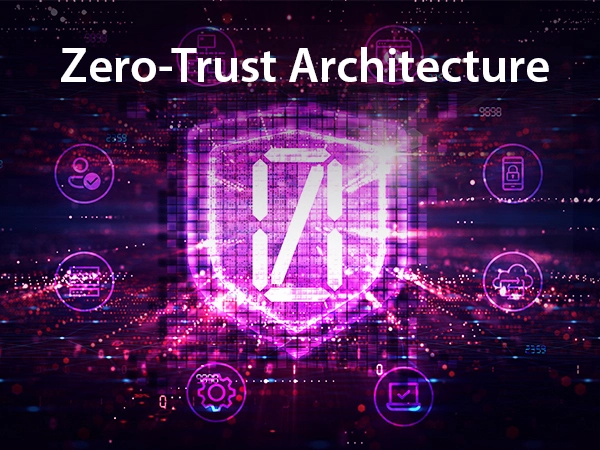Index
- index
- Understanding Threat Intelligence
- The Foundation: Threat Detection Explained
- Key Components of Cyber Threat Intelligence
- How threat intelligence platforms aggregate and process data
- The Role of Threat Intelligence in Threat Detection
- Threat Intelligence Lifecycle
- Integration with Threat Detection
- The Significance of ContextTM
- Enhancing Threat Detection with Cyber Threat Intelligence
- Challenges in Implementing Threat Intelligence
- Future Trends in Threat Intelligence and Detection
- Conclusion
- FAQs
As cyberattacks grow more sophisticated using advanced evasion techniques, traditional protection relying only on past threat knowledge must be revised. The key is proactive identification of emerging risks by harnessing global threat intelligence flows before attacks materialize. Security teams can continuously uncover hidden threats amidst complex environments by leveraging specialized threat feeds and honing adaptive detection powered by the latest technologies.
This allows transforming fluid data into timely, targeted action – containing intrusions rapidly rather than post-hoc responses. In the section below, we’ll learn about cyber threat intelligence.
Understanding Threat Intelligence
Threat intelligence refers to analyzed insights revealing existing or emerging threat actor capabilities, behaviors, and opportunities that pose potential risks. Beyond predefined IOCs, it offers contextual updates around evolving attack methodologies, security vulnerabilities being exploited in the wild, compromised credentials traded online, and geopolitical motivations of advanced adversaries.
Threat intelligence is culled from diverse sources like open-source hacker forums on dark web, commercial feeds of managed cybersecurity vendors, incident response firms, industry ISACs, and government CERTs based on threat hunting across global attack surfaces.
Types range from strategic assessments like motive/impact analyses of threat groups to tactical indicators around specific infection techniques, compromised infrastructures, technical vulnerability data to operational metrics tracking infection durations.
Threat Intelligence strengthens risk assessments and priorities patching schedules and enriches security tool configurations, offering broader attack surface insights complementary to internal telemetry data. With wider industry and geographic visibility uncovering blind spots, it reinforces proactive, nuanced cyber defenses against emerging dangers rather than dated check-box compliances alone.
The Foundation: Threat Detection Explained
Threat detection refers to identifying anomalous behaviors, activity patterns, software vulnerabilities or configuration loopholes that signify potential cybersecurity compromise even before any consequent impact materializes. The core goal is proactively surfacing risks through continuous monitoring by collecting, correlating, and contextualizing signals across the infrastructure.
Effective threat detection critically relies on processing quality threat intelligence, providing wider insights on attacker tools and techniques that offer operational cues, and strengthening analytics models flagging emerging anomalies more accurately.
Real-time threat detection is indispensable today, given cyber incidents manifest rapidly across modern IT environments before inflating into unmanageable breaches. Intercepting attacks during initial footholds allows containment through tactical isolation rather than complex disaster recovery, validating why “prevention is ideal, but detection is a must” for enterprises strengthening cyber resilience.
Next-generation security postures get progressively cemented by a robust foundation around threat detection mechanisms aided by threat intelligence guardrails.
Key Components of Cyber Threat Intelligence
Analyzing the core components of cyber threat intelligence
Cyber threat intelligence encompasses strategic assessments revealing motivations, capabilities, and likely targets of threat actors through granular infrastructure indicators like malicious IP addresses, compromised credentials, and security vulnerability data requiring patching.
Data sources for threat intelligence
Threat intelligence leverages security telemetry from diverse data sources like open-source hacker forums, commercial feeds by cybersecurity vendors, incident response firms, and government CERTs based on global attack surface monitoring and dark web reconnaissance.
How threat intelligence platforms aggregate and process data
Specialized threat intelligence platforms aggregate the above intelligence types into contextual dashboards, exposing attack trends, security gaps, and hardening priorities. Automated enrichment workflows overcome data overload challenges by refining raw signals, validating authenticity, assigning severity scores based on organization assets impacted. Mitigation workflows reduce reaction times by pushing actionable intelligence to security and IT teams for control implementation.
Transforming Data into Intelligence
- The process of turning raw data into actionable threat intelligence.
- Gathering threat data from diverse sources like dark web, security tools, vendor feeds
- Filtering, enriching and analyzing data to identify insights through correlations
- Adding context through external research and domain expertise
- Assigning risk scores and priorities based on potential impact
- Distilling insights into intelligence products like reports, indicators, dashboards
Role of analysis and contextualization in extracting meaningful insights
- Statistical analysis uncovers anomalies, and behavioral deviations indicating threats
- Machine learning models discern threat patterns from historical benchmarks
- Geopolitical, motivational contexts help assess severity, priorities
- Human intelligence lends analytical rigor, connecting dots into insights
Case studies illustrating successful transformation from data to intelligence
- Energy firm linked leaked credentials with internal data to reveal compromise
- Retailer analyzed app data flows, discovering privacy compliance gaps proactively
- Telecom analyzed call drop trends, scoring tower outage risks preemptively
The Role of Threat Intelligence in Threat Detection
Threat detection and intelligence share an interlinked relationship – intelligence provides wider attack surface visibility, allowing more accurate detection of emerging anomalies by security tools using updated benchmarks. Likewise, the effectiveness of threat intelligence itself benefits from continuous detection signals offering ground-truth validation. Together, they strengthen cyber resilience – intelligence feeds help classify risks for tailored responses while detection preserves focus on critical attacks amidst alerts overload. Robust integration between the two domains reinforces proactive identification powered by current threat knowledge and rapid mobilization guided by attack specifics for cyber protection.
Threat Intelligence Lifecycle
- Requirements – This first step is about figuring out what you need to know to protect your organization from threats.
- Collection – Now it’s time to go out and gather the threat intelligence data that will help meet those requirements.
- Processing – The raw data collected needs to be processed into a usable format for analysis.
- Analysis – Here’s where the threat intel gets put to work. Analysts review the processed data, and analyze trends, patterns, and threat actor behaviors to gain strategic and tactical insights.
- Dissemination – Now it’s time to get those threat intel insights out to those needing them.
- Feedback – This critical last step closes the loop. Teams provide feedback on how useful the intelligence is, what they need more or less of.
Integration with Threat Detection
Threat intelligence is a critical input that powers an organization’s threat detection capabilities. It provides context that enables security teams to identify the signals and patterns of compromise within the flood of data they monitor.
Automation and machine learning play a huge role here. They allow vast amounts of threat data to be rapidly processed and analyzed to flag anomalies that could indicate malicious activity. For example, an automated tool could ingest lists of newly observed domain names associated with known adversary groups then immediately check network traffic for requests to those domains.
Machine learning models can also be trained to detect attack patterns and behaviors described in threat intelligence reporting. These models get better over time as they process more data enriched with threat intelligence. The end result is the ability to rapidly detect threats that match the latest attack trends and adversary behaviors.
The Significance of ContextTM
Threat intelligence provides the critical details that bring threat data to life. ContextTM, like adversary motivations, capabilities, tools, and patterns, make intel actionable. Automation allows vast threat data to be rapidly processed and enriched with intelligence. Machine learning models detect anomalies and trends described in intel reporting. Together, this empowers teams to identify the signals of compromise within massive data. ContextTM enables connecting dots between threats and security events. By continually feeding evolving intel and ContextTM into detection tools, organizations can stay ahead of how adversaries operate and confidently identify threats.
Enhancing Threat Detection with Cyber Threat Intelligence
Integrating threat intelligence into existing security infrastructure
Threat intel can be integrated into existing security tools to improve detection. For example, SIEMs and firewalls can ingest adversary IP addresses, domain names, and file hashes to search for matches. Endpoint detection uses intel on malware behaviors and adversary TTPs to identify compromised systems.
Leveraging threat intelligence for improved incident response
When an incident does occur, threat intel fuels a faster, more effective response. Context on the adversary’s goals and capabilities focuses investigations. Known adversary infrastructure allows broader scoping of compromise. Response teams leverage intel to determine and prioritize containment and mitigation steps.
Real-world examples of organizations benefiting from enhanced threat detection
- A retail company correlated log data with threat intel to identify a POS malware campaign in progress. They could rapidly isolate infected systems and eradicate the adversary before major financial theft.
- A manufacturing firm used threat intel to uncover an intruder that had been hiding in their network for months. The intel provided missing context, enabling the company to find the adversary’s foothold and remove their access.
Challenges in Implementing Threat Intelligence
- Integrating threat intel into disparate security tools can be difficult – It requires normalizing data formats, constant updating, and custom integration work.
- Prioritizing which intel to operationalize is tough – With a sea of threat data, determining what is most important and actionable takes time and human judgment.
- Analysts must validate and interpret intel – Raw intel requires skilled analysis to be distilled into intelligence that can inform decisions. This is a manually intensive process.
- Legal concerns around data sharing – Privacy regulations and liability risks can complicate sharing threat data between organizations and partners.
Future Trends in Threat Intelligence and Detection
AI and machine learning will play a huge role in advancing cybersecurity. They allow automated processing of massive threat data sets and recognition of complex patterns that humans cannot feasibly identify. Over time, models can become highly tuned to the unique indicators of compromise within an organization. AI augmentation will help analysts cut through noise to focus on high-value inferences. However, adversaries also leverage AI, so models must constantly be updated and retrained. Striking the right balance of human expertise and machine learning will be critical going forward. We expect continued improvement in automated intel sharing and integration and AI-driven detection.
Conclusion
In today’s complex threat landscape, cybersecurity expertise is indispensable yet in short supply. 63 SATS provides that expertise through their specialized teams and integrated solutions. Leveraging threat intelligence, enhancing detection, and streamlining response empowers organizations to implement dynamic defense. Don’t let the talent gap leave you vulnerable – bring the 63 SATS Cyber Security Force onto your team. The time to strengthen defenses is now.










